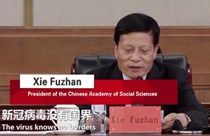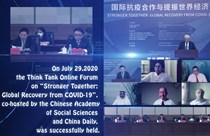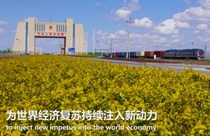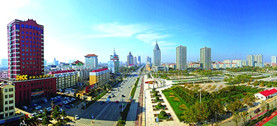
. > FOCUS > URBANIZATION
Urbanization of migrant workers to speed up reform dividends
Author : Hao Weijing Source : Chinese Social Sciences Today 2014-09-23
“The integration of the rural migrant population into cities will produce immediate dividends of reform,” Cai Fang, vice-president of the Chinese Academy of Social Sciences (CASS), said at the 2014 CASS Forum on Economics themed “New Pathway to Urbanization: Quality Enhancement” held in Yichang, Hubei Province, from September 12 to 13.
Human-centered urbanization is expected to, through reform, bring about higher potential growth rate from the supply side, said Cai.
In future, China will face a big gap in human resources. The disappearance of demographic dividends, shortage of the labor force and decrease of return on invested capital will all cause the underlying growth rate to fall.
Urbanization of migrant workers will remedy the situation by catalyzing the potential of labor force transfer and enlarging the size of workforce on the one hand and by sharply increasing the labor participation rate of migrants on the other hand, thus enhancing the potential economic growth rate.
Meanwhile, to continuously accelerate the shift of surplus rural labor force to higher-productivity sectors will facilitate the reallocation of resources.
Despite positive results achieved in the urbanization drive, a good number of problems are becoming increasingly acute, such as faster land urbanization than urbanization of population, unreasonable spatial distribution of cities, low urban management services, weak protection of cultural heritage, and more.
These prominent problems are sounding an alarm to China that efforts must be concentrated on quality enhancement in the process of urbanization.
To this end, economic development modes counting on cost advantages and excessive resource input regardless of environmental protection should be abandoned in favor of an eco-friendly, low-carbon and sustainable development pattern, said Pan Jiahua, director of the Institute for Urban and Environmental Studies at CASS.
The Chinese link: http://cass.cssn.cn/yaowen/201409/t20140919_1334061.html
Translated by Chen Mirong
Revised by Tom Fearon
Ye Shengtao made Chinese fairy tales from a wilderness
Ye Shengtao (1894–1988) created the first collection of fairy tales in the history of Chinese children’s literature...
-
How northern ethnicities integrated into Chinese nation
2023-09-18
-
Mogao caves
2023-09-12
-
Mogao Grottoes as ‘a place of pilgrimage’
2023-09-12
-
Time-honored architectural traditions in China
2023-08-29
-
Disentangling the civilizational evolution of China
2023-08-28
-
AI ethics in science fiction
2023-08-23













 2011-2013 by www.cssn.cn. All Rights Reserved
2011-2013 by www.cssn.cn. All Rights Reserved